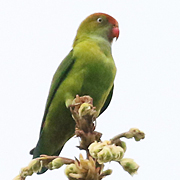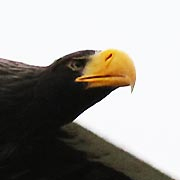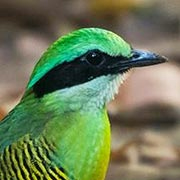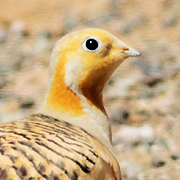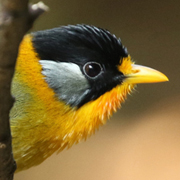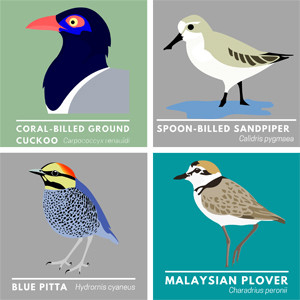
Woodland and heathland birds in UK have both declined in numbers in my lifetime and many species that used to be common now seem to be scarce even in what looks like good habitat. The populations of some heathland species have now stabilized or even increased, probably due to improved habitat management, although others, particularly migrant species, continue to decline. Woodland birds have declined dramatically, particularly in the Southeast of England, to the degree that species such as Willow Tit, Common Redstart, Tree Pipit and Spotted Flycatcher seem to have completely disappeared from places where they used to be fairly common. With this in mind I decided to take advantage of good weather to visit Ashdown Forest to look for some of these birds.
Ashdown Forest is an area in East Sussex that has a number of connecting patches of heathland and woodland, still containing good numbers of birds that are absent in much of the southeast. It is a particularly good place to see European Nightjar, but on this occasion I did not plan to stay out until dusk. I did, however, see a number of other interesting species.
I arrived at around 8.30am and took a walk around the Sussex Wildlife Trust’s Old Lodge Reserve, which is adjacent to the largest sections of Ashdown Forest and managed for wildlife. I quickly came across several singing Willow Warblers a bird still quite common in good habitat but completely absent from many areas now; I was able to get some nice photos of this species and very soon after I saw Chiffchaff which was nice for comparison.
Walking along woodland/heathland edge I came across a family group of Common Redstarts, the first of several that I saw, and it was nice to see that they are doing well at this location. In the same area I went looking for Woodlarks and found a pair very close to where I saw them last year – obviously a good territory for this species. I was able to watch these birds on the ground and hear them call to each other as well as obtain some reasonable photos. A little further along I heard the first of many Stonechats that I saw on my walk; it was odd to see them being chased around by a pair of Chiffchaffs and a juvenile Redstart.
The weather really warmed up and predictably this brought some raptors out with a Kestrel and several Buzzards, including one perched bird being mobbed by a Green Woodpecker. An adult Hobby sitting on top of a dead tree was a very nice sight before it flew off to hunt and two Ravens sunning themselves on a sandy bank was evidence of this species’ spread into lowland areas. Several flocks of feeding birds included Coal Tit, Nuthatch, Treecreeper, Long-tailed Tit, Great Spotted Woodpecker and Goldcrest with species such as Blackbird, Dunnock, Wren and Robin being very common.
I worked up an appetite on my long walk and after some lunch I went for another walk across some heathland where in the past I had seen Tree Pipit and Dartford Warbler. With the heat and time of day it was actually very quiet but after some off trail walking I found a nice pair of Tree Pipits which I was able to observe at close range and hear their call which confirmed that they were not the commoner Meadow Pipit. More Stonechats, some Linnets and a couple of flyover Lesser Black-backed Gulls were the only other birds and with this I decided to drive back home.
Many birders know of the New Forest, the Surrey Heaths of even places in Suffolk as good places to see woodland and heathland birds in southern England but Ashdown Forest is a lesser known location which, for many bird watchers in the southeast, is the nearest place to see birds such as Woodlark, Tree Pipit and Nightjar.


 August 1st, 2015
August 1st, 2015  Nick
Nick  Posted in
Posted in  Tags:
Tags: 

